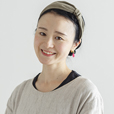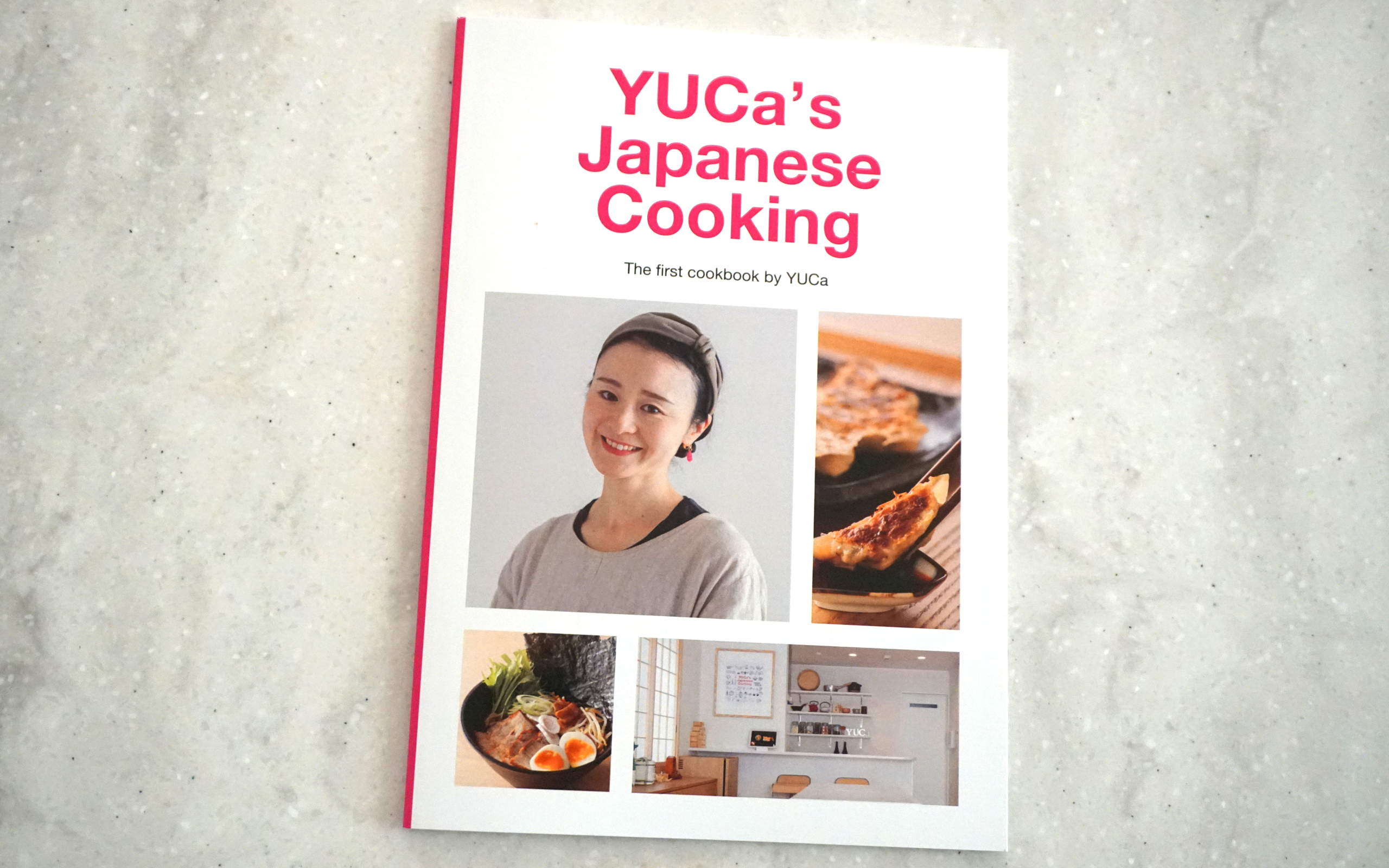Latest Posts
Undo-kai (Sports Day)
Sports Festival (Sports Day), also known as “Undo-kai” (運動会) in Japanese, is a traditional annual event that is generally held in spring or fall. On the day, all students participate in a variety of sports events such as relay and dance performances typically held on the school’s grounds.
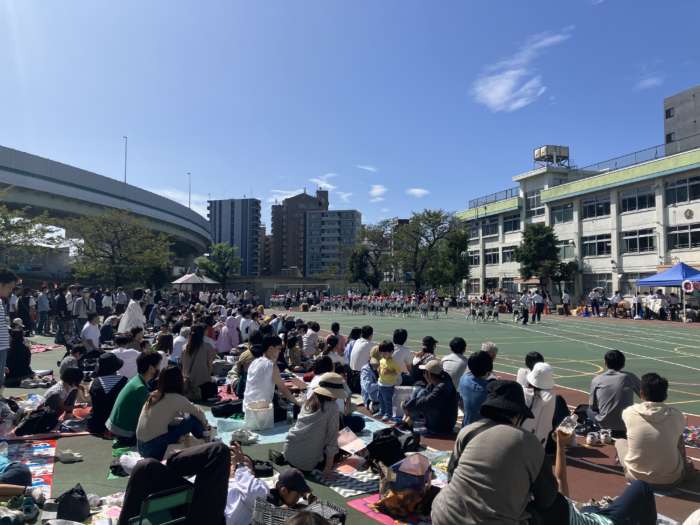
There are competitions in which students are divided into two or more teams and compete to win, which is a lot of fun for the students as well as their parents. Here are some typical athletic competition.
Read More
Annual Events and Food in Japan
Annual Event & Festive Food In Japan
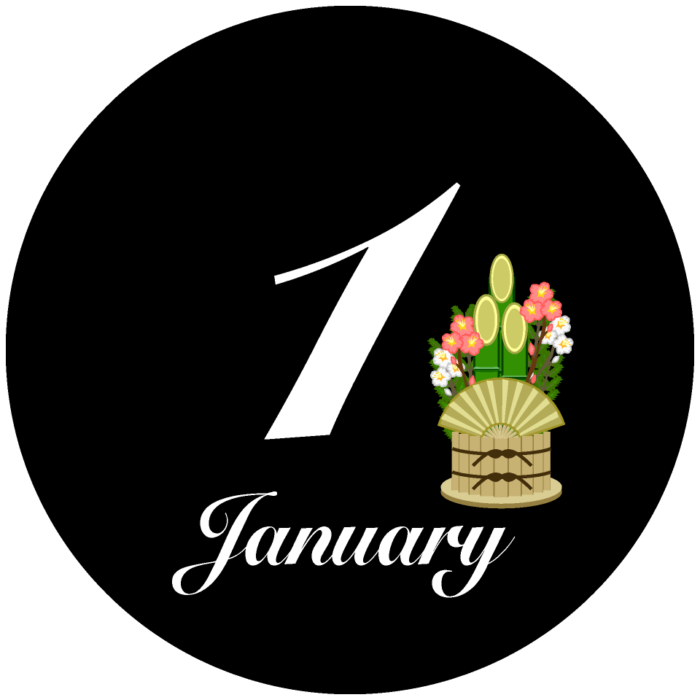
1st – Shogatsu (New Year) : Osechi(-ryori), Fukubukuro, Shimekazari
7th – Nanakusa no Sekku (Seventh-Day New Year) : Nanakusa gayu
11th – Kagami Biraki (Opening the Rice-Cake Offerings) : Oshiruko
15th – Koshogatsu (Small Shogatsu) : Red bean rice porridge
20th – Hatsuka shogatsu : Ozoni

3rd – Setsubun (Seasonal Division) : Ehomaki
8th – Harikuyo (Memorial Service for Needles) : Tofu
10th – Hatsu-uma : Inarizushi
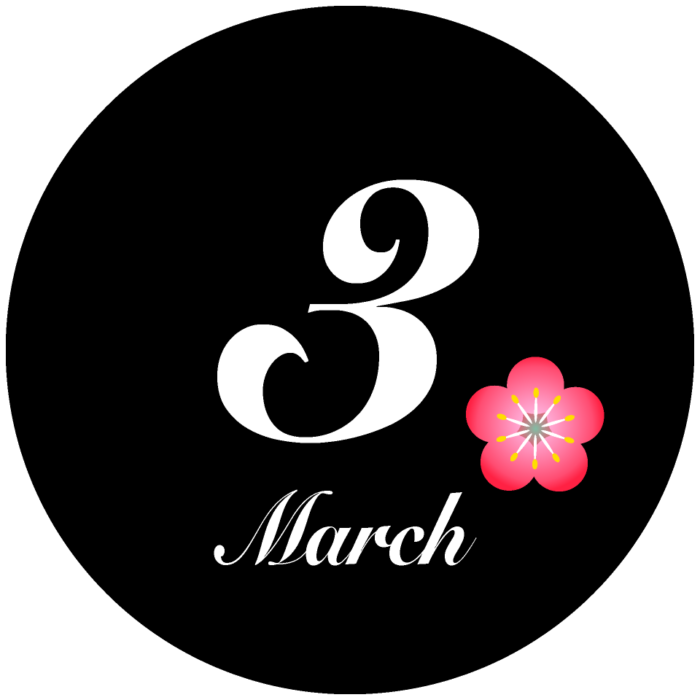
3rd – Hinamatsuri/Momo no Sekku (Doll Festival ) : Chirashizushi
21st – Ohigan (Spring Equinox) : Botamochi
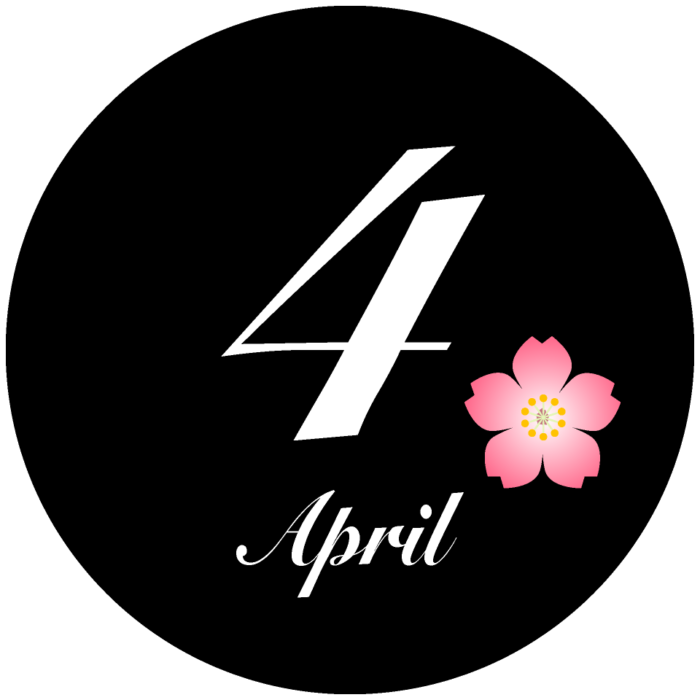
Hanami (Cherry-Blossom Viewing) : Sakuramochi, Dango
8th – Hanamatsuri (Flower Festival)
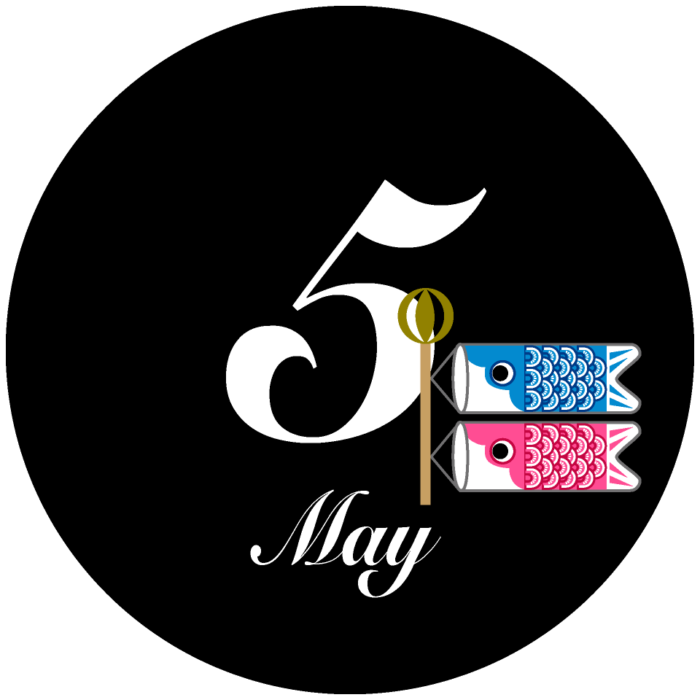
5th – Tango no sekku,(Children’s Day) : Kashiwa-mochi, Chimaki
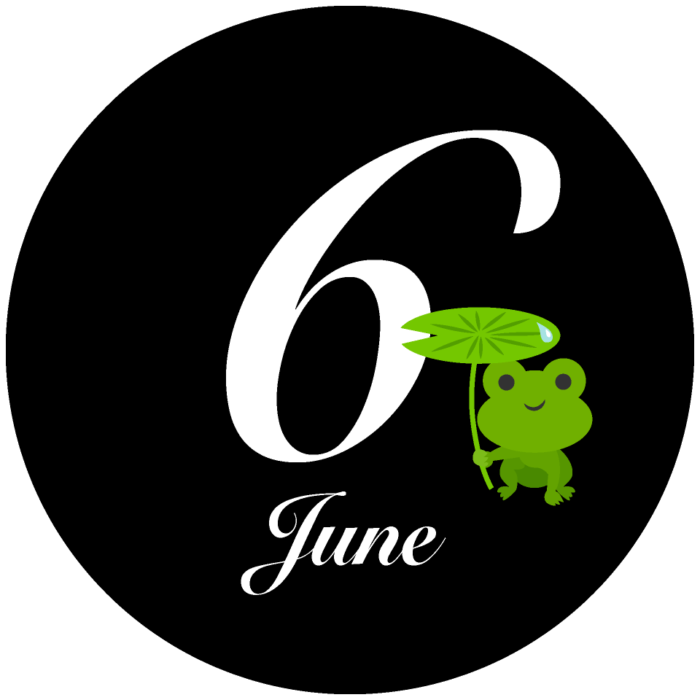
Koromogae (Seasonal Change of Clothing)
Around 10th – Nyu-bai : Plum syrup, Umeboshi

7th – Tanabata (Star Festival) : Somen

15th – Obon (Bon Festival) : Vegetable Tempura, Rice Dumplings, Udon, Inari Sushi
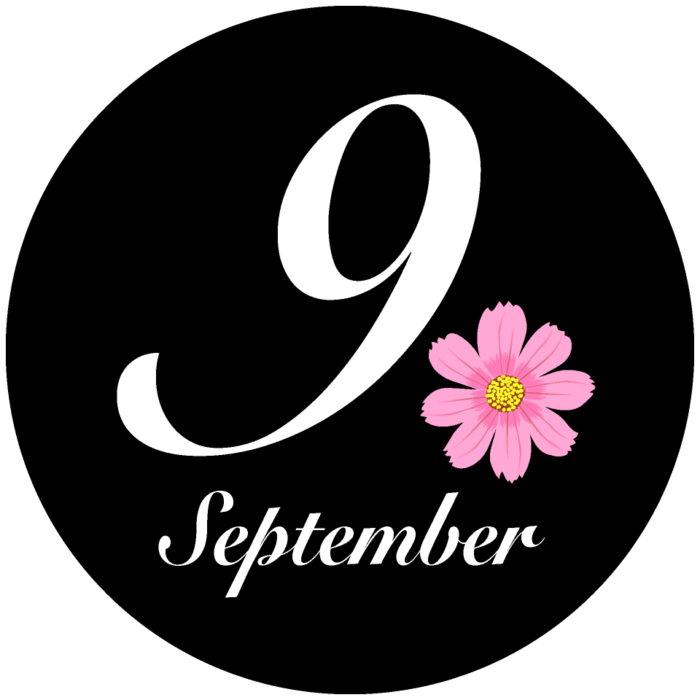
15th – Otsukimi (Moon Viewing) : Tsukimi Dango
Ohigan, Autumn Equinox : Ohagi

19th – Choyo no Sekku (Chrysanthemum Festival) : Kiku-zake, Kikuka-cha, Kiku-monaka *Sept.9 on Lunar Calendar
Undokai, Sports Festival : Bento
Ensoku, School Excursion : Bento
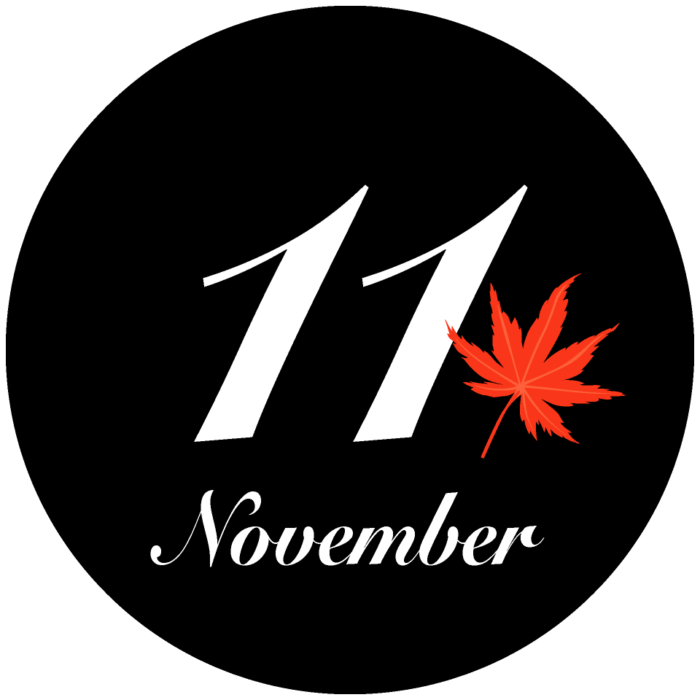
15th – Shichi-go-san (Festive Day for Children) : Osekihan, Chitose-ame, Tai no Shio-yaki

13th – Toshikoshi (Crossing over to a New Year)
Around 22nd or 23rd – Toji (Winter Solstice) : Azuki-gayu, Pumpkin
31st – Omisoka (Last day of the year) : Toshikoshi soba
Summer Festivals in Japan
From May to August, summer festivals of various scales are held in various parts of Japan. These include rice planting festivals, purification festivals, festivals of souls or shinkosai (Shinto festivals in which mikoshi (portable shrines) are paraded through the streets). From the day before the festival, the area is enveloped in a festive atmosphere. The energy of the people carrying the magnificent portable shrines and the enthusiasm of the onlookers seem to bring the summer heat to a peak.
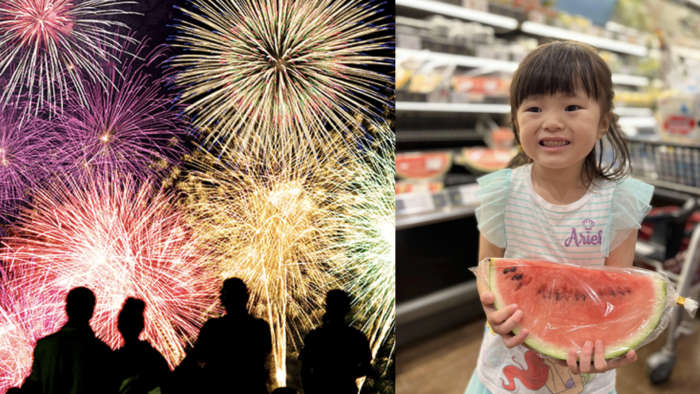
Today’s summer festivals feature mikoshi carried by men wearing hanten (short coat) and matahiki (drawers) and street stalls of goldfish scooping, cotton candy, masks, etc., comprising the festival attractions in summer.
Most summer festivals are observed to thank the gods for a peaceful and happy life in the past half year or to prevent any disaster and appease the spirits of the deceased.
Fireworks displays, the Bon Festival (featuring bon-odori dances), hozuki (Japanese lantern plant) markets and morning glory markets are also regarded as summer festivals.
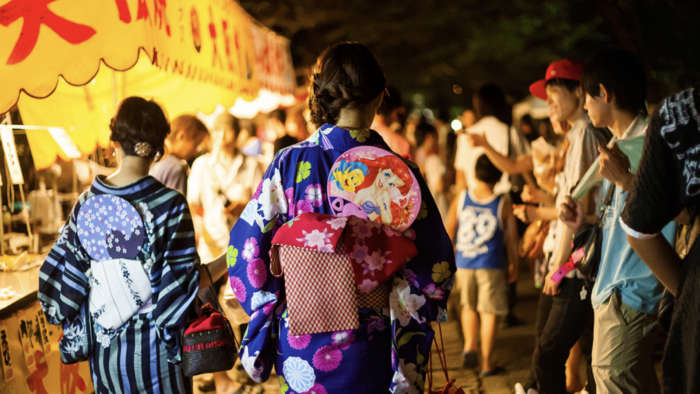
Shichi-go-san (Festive Day for Children)
November 15 is Shichi-go-san (7-5-3). It is a day to give thanks for health and pray for guardian gods for the future happiness of three and five-year-old boys, and three and seven-year old girls.
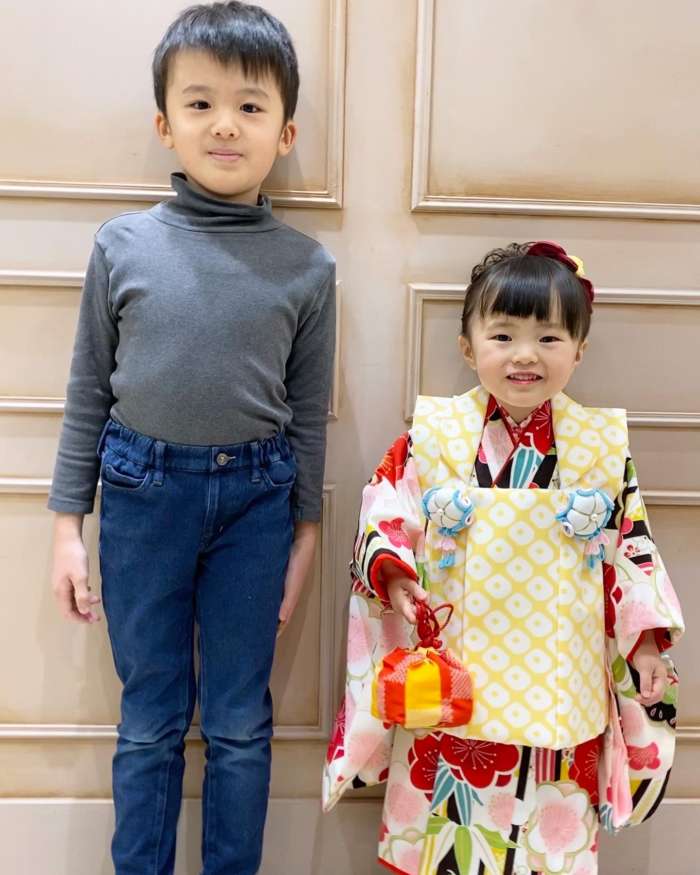
In the old days, the mortality rates of young children being so high, children were thought to belong to the gods until the age of seven. A child younger than seven years old was not considered a full-fledged member of society. They were not punished for their sins and did not have to mourn. The Shichi-go-san festival was an important event to mark turning points during infancy, and to show one had become a member of society.
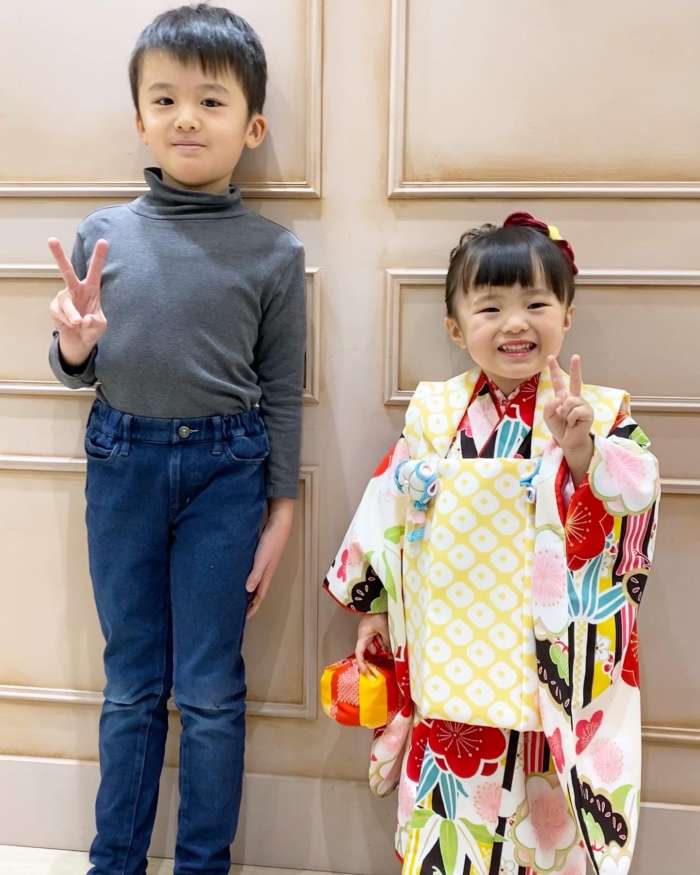
Japanese �Baby and Child Celebrations
Fifth Month of Pregnancy :
Obi-Iwai (Obi-tying ceremony)
After labor & delivery:
Hospitalization for 5 to 7 days
7th day after birth:
Meimei Shiki (Naming ceremony)
Oshichiya (The 7th night after birth)
14th day after birth:
Birth registration
1 month after birth:
Omiya-mairi (Visit to the shrine)
3 months after birth (100 days after birth):
Okuizome (Weaning ceremony)
5 months after birth (150 days after birth):
Weaning begins
First festival after birth:
First New Year’s Day
First Doll’s Festival (3/3 for girls, 5/5 for boys)
First birthday:
Aruki iwai (Celebration of walking)
Tanjou mochi/Chikara mochi/Tachi mochi
Erabitori
Age 3:
Shichi-Go-San (3 years old-girl)
Age 4:
Entrance ceremony (also for 3 year olds)
Age 5:
Shichi-Go-San (for 5 year old boys)
Age 6:
Graduation ceremony
Entrance ceremony
Age 7:
Shichi-Go-San (7-year-old girl)
Age 12:
Graduation ceremony
Age 13:
Jusan mairi (13-year-old girl)
Oshichiya (The 7th Night After Giving Birth)
Every region has a custom to hold some kind of celebration on the night that falls on the seventh day after the baby is born, which is called the “Oshichiya” (お七夜).
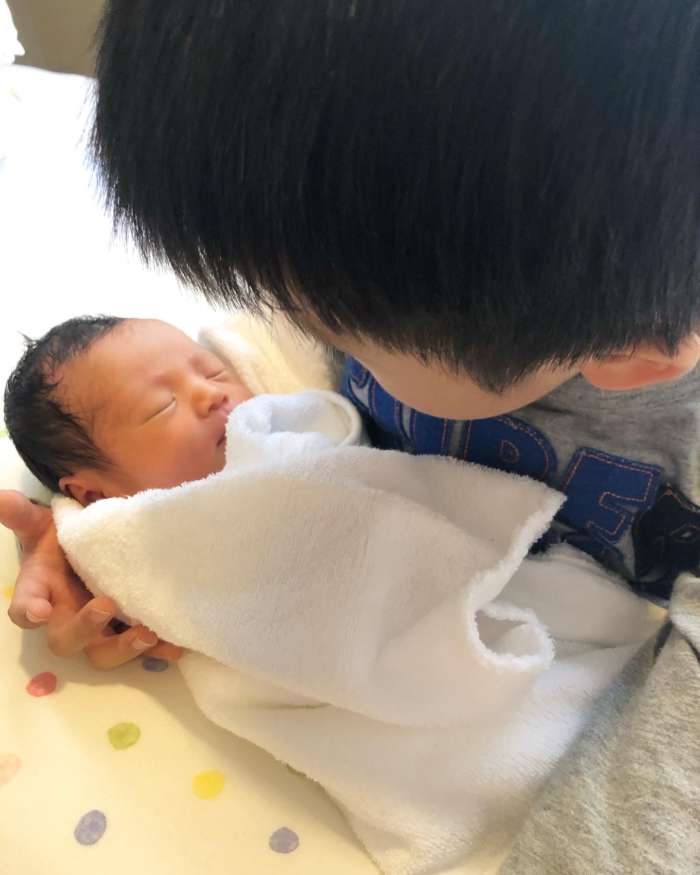
In the past, relatives, neighbors, matchmakers, godparents, midwives, and others were invited to a feast, where the baby’s name was announced and the baby was recognized as a member of society for the first time.
This is a remnant of this tradition, and this gathering is also known as the “celebration of naming called “Meimei Shiki“(命名式).
How to celebrate the Oshichiya
The standard celebration meal for Oshichiya is a red rice (sekihan) served with a fish head. Other auspicious items such as kombu (kelp) and red and white fu (wheat gluten) are also used, but they vary from region to region. You may also serve simmered dishes, sashimi, etc. according to the taste of the guests.
Since it is impossible for the mother to prepare the food for the Oshichiya, it is common to ask the grandparents to help, or to have the food catered.
It would be a pity to take a seven-day-old baby out to a large gathering, so it is best to put the baby in a separate room and allow the guests to see him or her before the feast begins.
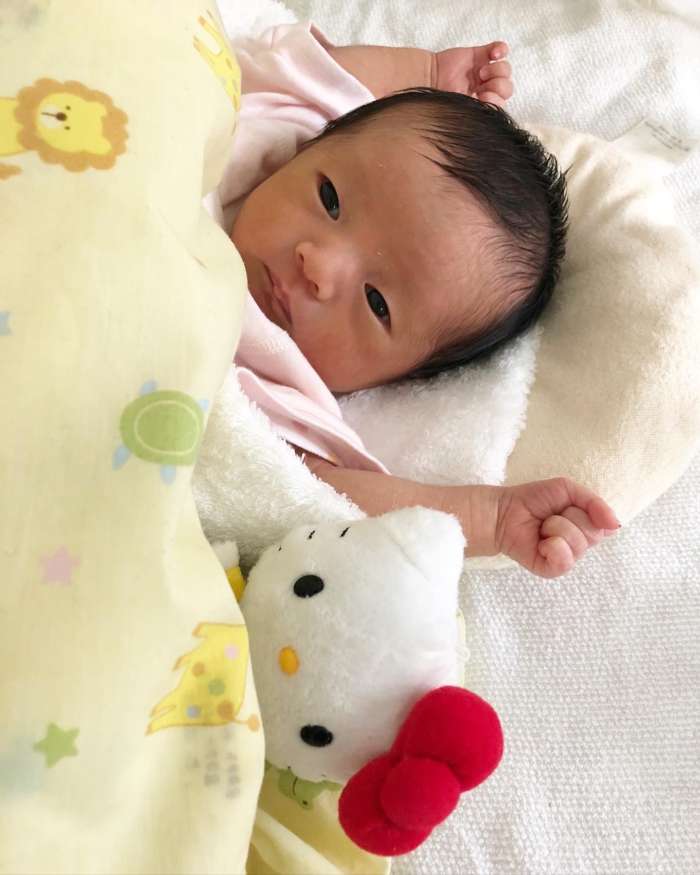
Who to invite to the seventh day
The seventh day of life is the time when the mother and the baby are discharged from the hospital, and the mother is easily exhausted. Therefore, today, it is common to invite only the grandparents from both sides of the family for an informal celebration.
If you are invited to the seventh night
Although there is no specific custom, it is a good idea to bring a gift of some kind. It is common to bring a bouquet of flowers, a cake, sake, fruit, a small toy, or baby items.
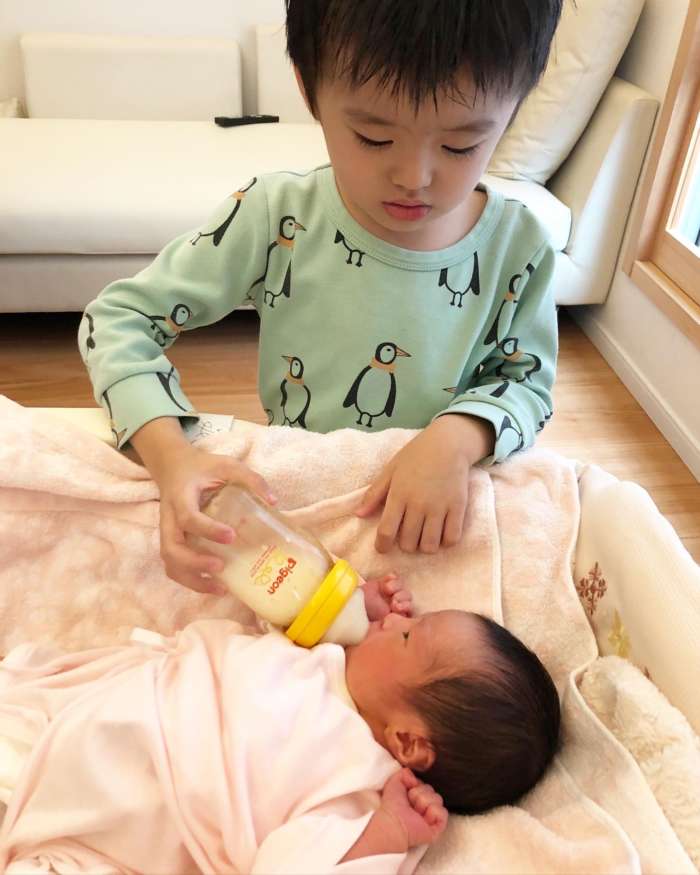
Memo:
Are you interested in more about Japanese culture & events? Check here!
Koromogae (Seasonal Change of Clothing) 衣替え
As the seasons change from spring to summer, people put away their warmer clothing and take out their lighter, thinner clothing. Some families even use different furniture and household utensils.
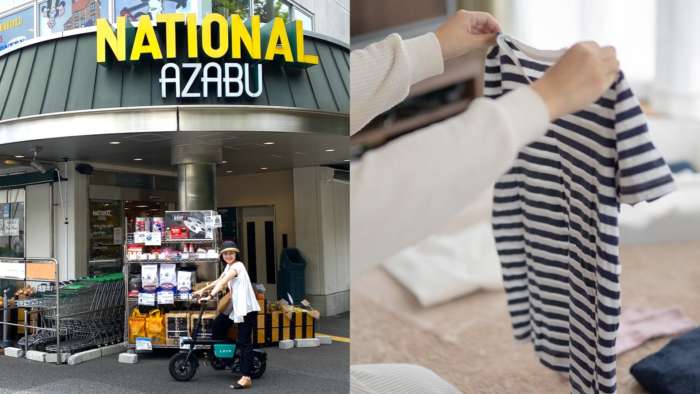
Although things have changed considerably from the days when kimonos were worn every day, the custom of changing clothes according to the season still continues.
Schools and workplaces with uniforms also have the custom of changing clothes. Jackets are removed, tops are changed from long-sleeved to short-sleeved, and bottoms are made of light, breathable fabrics such as linen. Also, depending on the industry, many workplaces are encouraging employees to wear no-ties or casual clothes to work only during this time of the year.
In very olden days, it was the custom at the royal court to change into summer attire on April 1 of the lunar calendar and back into winter on October 1. In later years, the Shogun issued precise regulations regarding dress to all samurai and ladies of the court. Commomn people as well were bound by the regulations.
During the Meiji period, the government established official dates for the seasonal change of clothing. To this day, it is still general practive to change from winter to summer clothes on June 1 and back to winter on October 1.
Seasonal Changes in the House
- Yoshido (葦戸) : Sliding door made of reeds
- Hanagoza (花茣蓙):Colorful rush matting to lay on top of tatami
- Kayari (蚊遣り) : Mosquito coils burn in holders of various shapes
- Uchiwa (団扇) : Round flat fan
- Kaya (蚊帳) : Mosquito netting is rarely used in Japan nowadays but until dairly recently people slept under these nets during summer.
- Natsu-noren (夏暖簾) : Noren are long divided curtains often hung in the entryways of shops and restaurants. During the summer, many shop owners noren made of linen or other light babrics.
Memo:
Are you interested in more about Japanese culture & events? Check here!
Meimei Shiki (Naming Ceremony)
In the past, it was common for respected people or relatives with longevity to be godparents, or for fathers and grandfathers to name their babies, but these days, with the trend toward nuclear families, parents are more likely to name their babies.
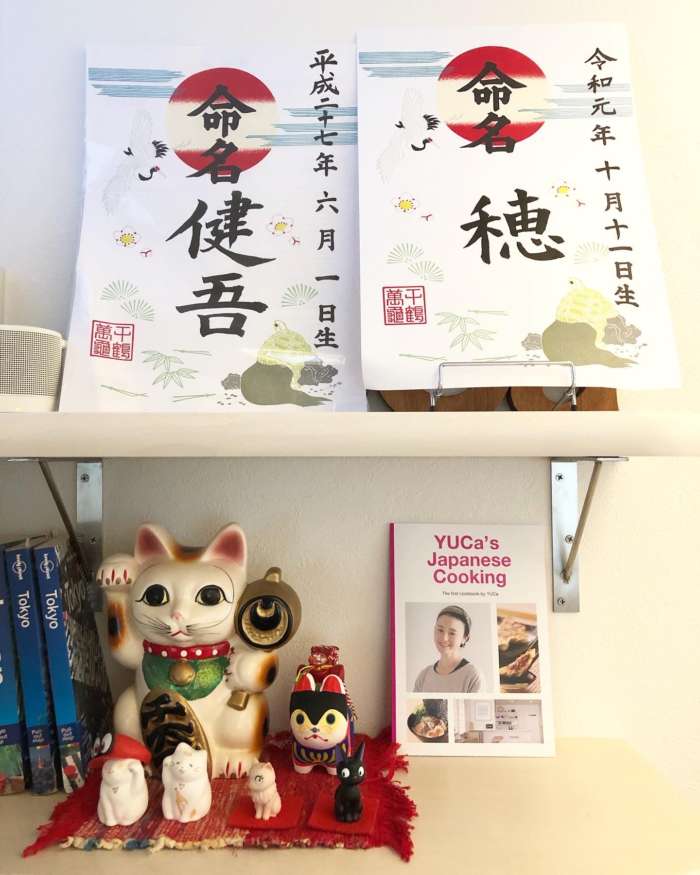
How Parents Decide The Name?
In the past, people often used the family name as a reference for naming their children, but nowadays people tend to focus more on the ease of calling (sound) and the image of the Chinese characters.
However, there are cases where grandparents or relatives place great importance on the family name judgment and cannot be ignored. Since surname and name determination is based on the balance of characters with the family name, the range of names is limited. (My mother, for example, bought books and did careful research.)
Once a potential name is chosen, the parents check the name from various angles for any flaws. It is important to note that some kanji cannot be used for names. The only kanji that can be used are the Joyo Kanji and Kanji for personal names. Since the reading is free, some parents give a reading that is somewhat close in sound and meaning to the kanji.
Recent Name Trends
The most popular names in 2021 were “蓮”(REN) for a boy and “陽葵”(HIMARI) for a girl. REN was the 1st for 4 consecutive years and HIMARI was 1st for 6 consecutive years!!!
As the effects of the COVID situation continue to be felt, there seems to be a growing trend among both men and women to choose names that are more solid and reassuring than those that are varied and novel.
Another name, “AOI,” ranked first in the common reading for both boy and girl, is a popular gender-free name.
Meimei Shiki (Naming Ceremony)
Parents usually decide their newborn’s name until the 7th day after the birth. This is because they used to invite their family and relatives and hold special dinner gathering/party. At this event, parents announce their baby’s name for the first time and put the paper with their baby’s name on the wall to show everyone.
Nowadays, parents and their family (including relatives) live apart because of lifestyle and also for work situation. So, it’s not so easy to coordinate this gathering after the child birth. Modern parents usually celebrate this event only for themselves these days. Same as this situation, my husband and I had casual lunch with my parents on the day I came back home from hospital. (After lunch, I went asleep to get recovered…zzz)
Read More
Obi Iwai (Obi-Tying Ceremony)
In Japan, when a woman reaches the fifth month of pregnancy, she wears an abdominal belt called an “Iwata Obi” (岩田帯) in hopes of an easy delivery.
It was worn every day until the day the baby was born, but these days few people actually wear one, even though some buy one for celebratory purposes.
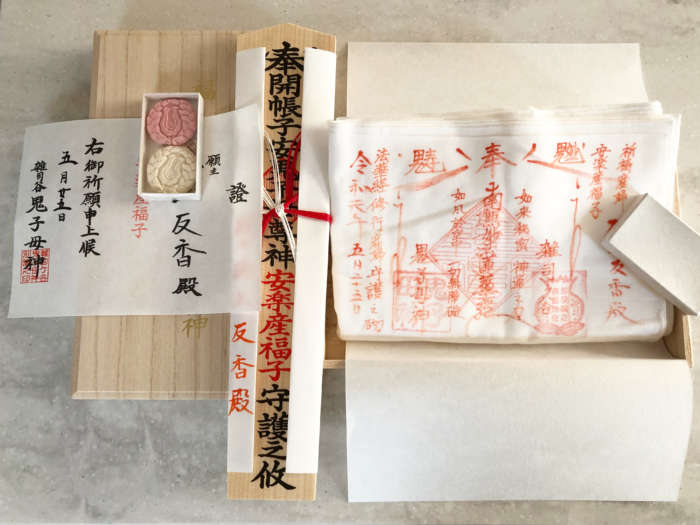
Nowadays, instead of belly bands, people wear girdles or belly wraps, which are convenient for taking off the belt.
And the first day to wrap the girdle is called the Obi Celebration, which is the day of the dog in the fifth month of pregnancy.
(In the lunar calendar, each of the twelve signs of the Chinese zodiac is distributed on a different day of the month, so there are two or three Dog Days in a month.)
Dogs are said to be fertile and to have an easy delivery, so the dog day is probably because of the desire to be named after them.
In the past, belly bands were usually sent with dried bonito flakes and sake from the family of the expectant mother, after prayers for safe delivery had been offered at a nearby shrine or temple.
It may also be given by a matchmaker or a close couple blessed with a child.
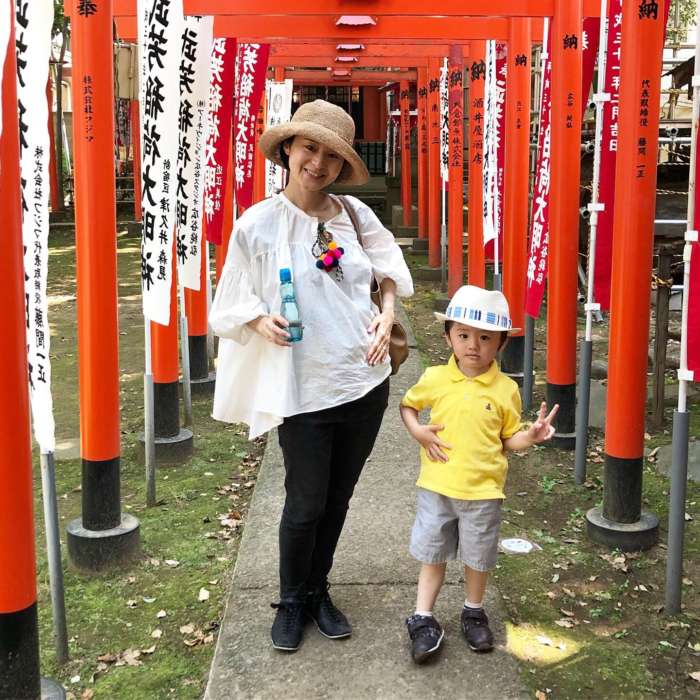
The gift varies from region to region, such as a bleached cotton with the words Kotobuki or Inu (dog) written in red, or a talisman tucked into the obi.
Since it is a lucky charm, it may be appropriated in the form of a token, which can then be purchased at shrines or department stores that offer prayers for easy childbirth.
In my case, there is a famous shrine called Kishimojin in my neighborhood, so I went there to pray for a safe delivery. At that time, I bought a belly band.
During my pregnancy, I wore a girdle-style one, both with my first son and when I gave birth to my first daughter.
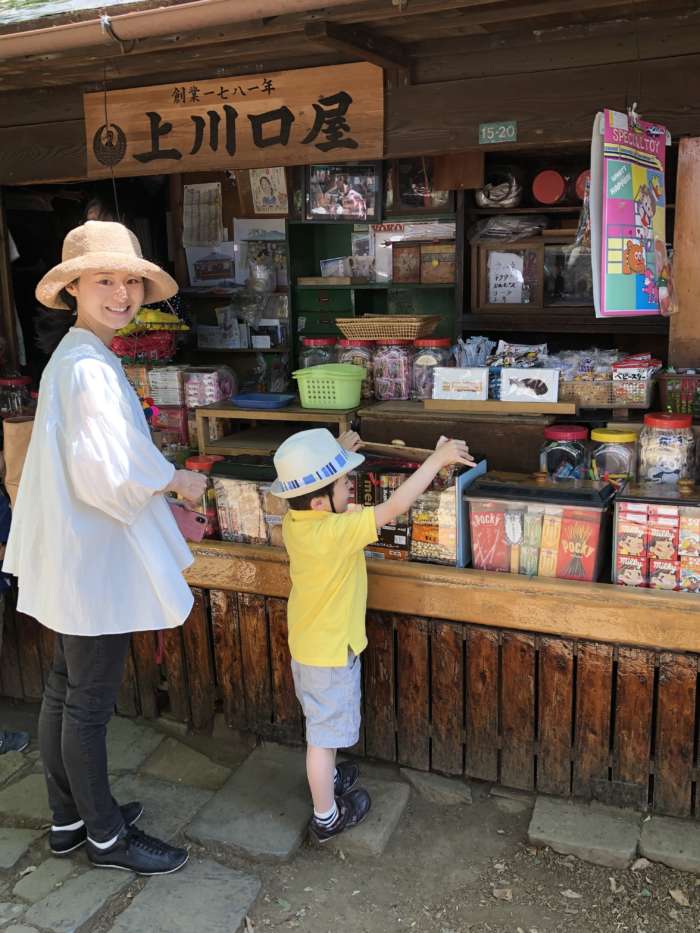
Memo :
1. Are you looking for baby food making items? Visit our shop!
2. To make Japanese baby foods, please check recipe tutorials!
3. To know more about Japanese culture, please check Events & Food Culture.
Children’s Day (Tango no sekku) 端午の節句
Children’s Day is a Japanese national holiday which takes place annually on May 5th, and it is part of Golden Week Holidays. The day was originally called “Tango no Sekku”, or Boy’s Festival, was celebrated in order to wish the healthy growth of the boys in the family.
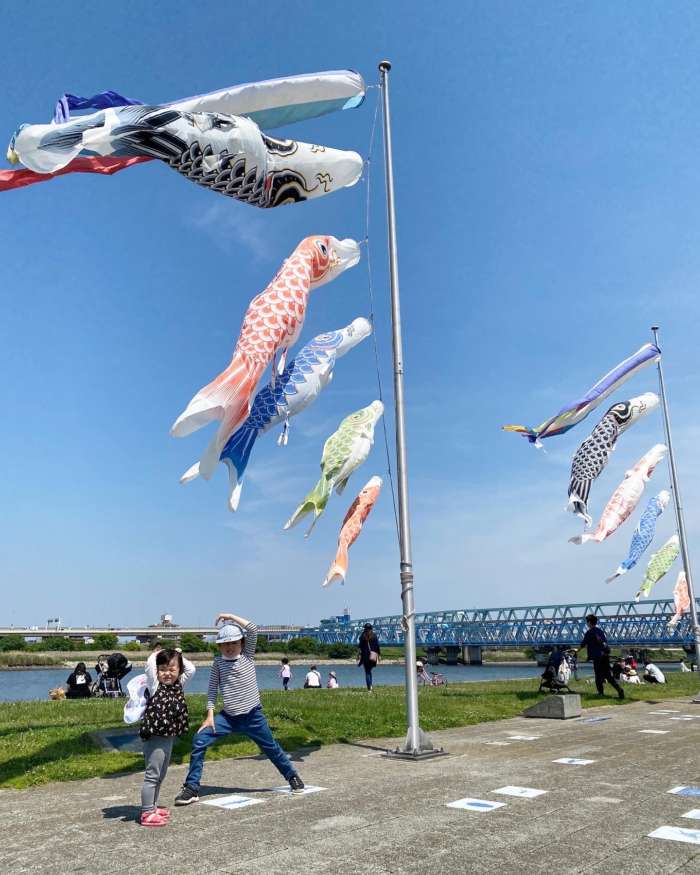
Outside of their houses, families with boys fly large carp streamers called “Koinobori”. Inside they display various kinds of warrior dolls or ornamental helmets called Kabuto because they are believed to be symbols of strength and vitality. At night, people put iris leaves and roots in the bath. It is believed that it will purge noxious vapor.
In 1948, this day was designated a national holiday and renamed “Children Day”. It is now a day for boys and girls to celebrate together.
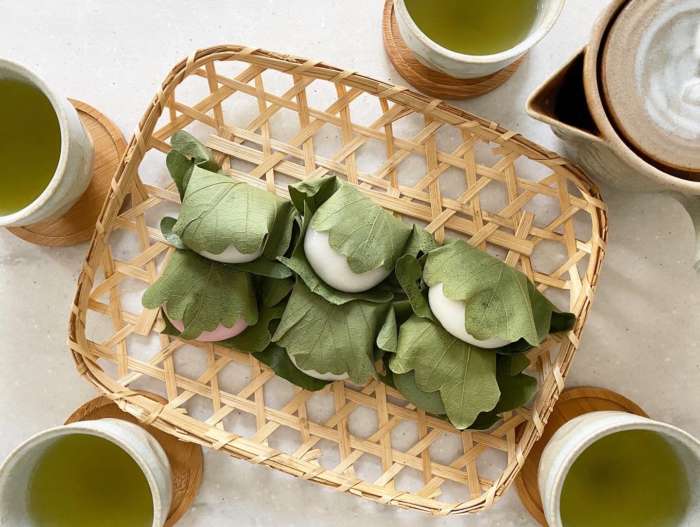
Traditional foods such as “kashiwa-mochi” and “chimaki” are eaten on that day. Kashiwamochi is steamed dumplings filled with sweet red bean paste and wrapped in oak leaves. Oak trees don’t drop their leaves until new shoots have begun to appear. The leaved represents the wish for continuation of the family line and are thus an auspicious part of these traditional sweets.
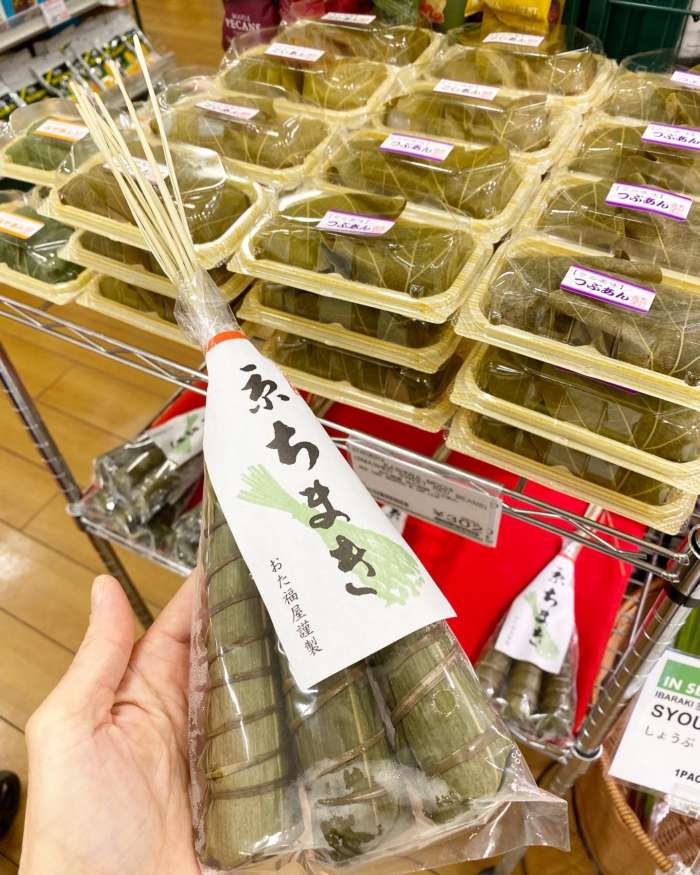
Chimaki is also dumplings made of glutinous rice, wrapped in bamboo leaves and tied with a piece of rush. This type of sweets came from China and is seen in various forms around Japan.
Iris leaves and roots are also used in baths. It is believed that putting iris leaves and roots in the bath can ward off evil spirits.
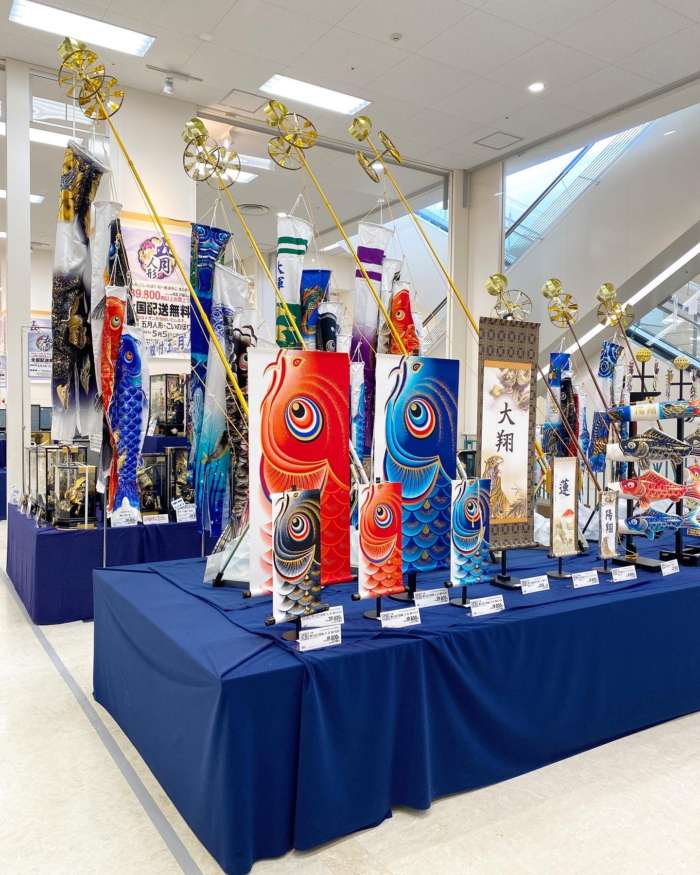
Koinobori (Carp Streamers, こいのぼり) sold at the store. During the Edo period, common people began to make banners in the shape of carp because according to an old Chinese legend, there was a carp which swam upstream all the way to heaven and turned into a dragon. Parents who want their sons to grow up strong and brave so to this day, in the month of May people have continued the practice of flying koinobori. They are usually seen with the streamers on top and the black, red and blue carps below.
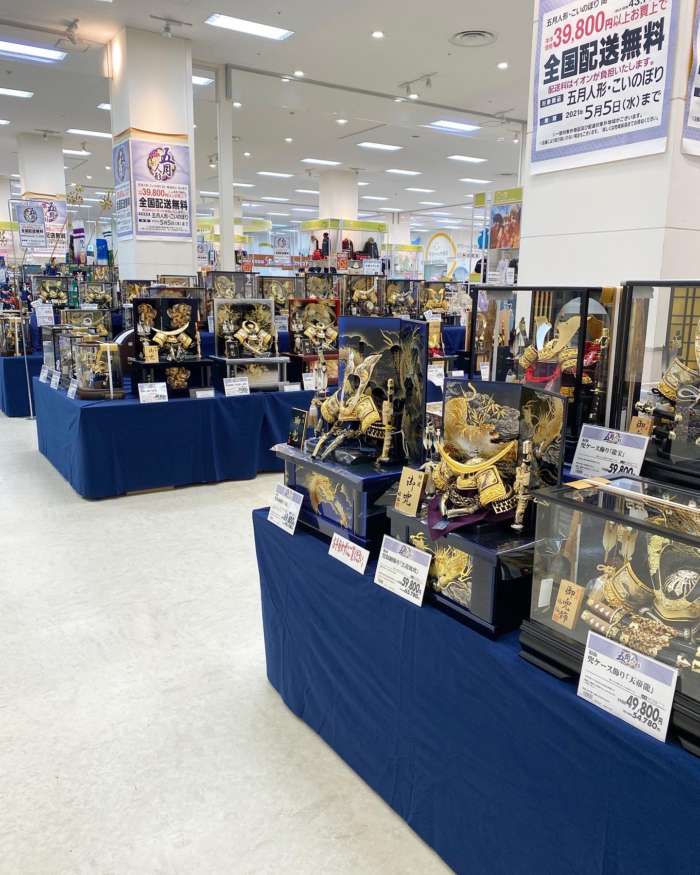
During this season in very olden times, from about the 7th century, people observed customs which had come from China. May was thought to be an unlucky month so in order to drive away evil spirits, ordinary working people picked certain plants which were valued for their medicinal powers and made potions or decorative dolls to hand in the doorways.
In later years, from the Edo period, they began to display warrior dolls, helmets and banners which symbolized people’s hopes that their sons would grow up into strong and brave young men.
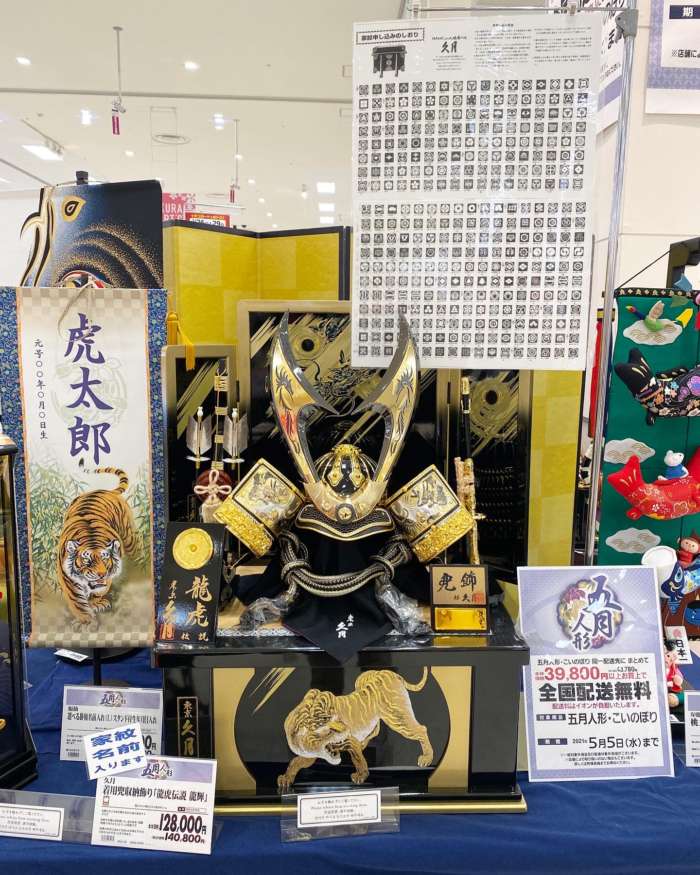
This was the most expensive warrior doll set in this shop!
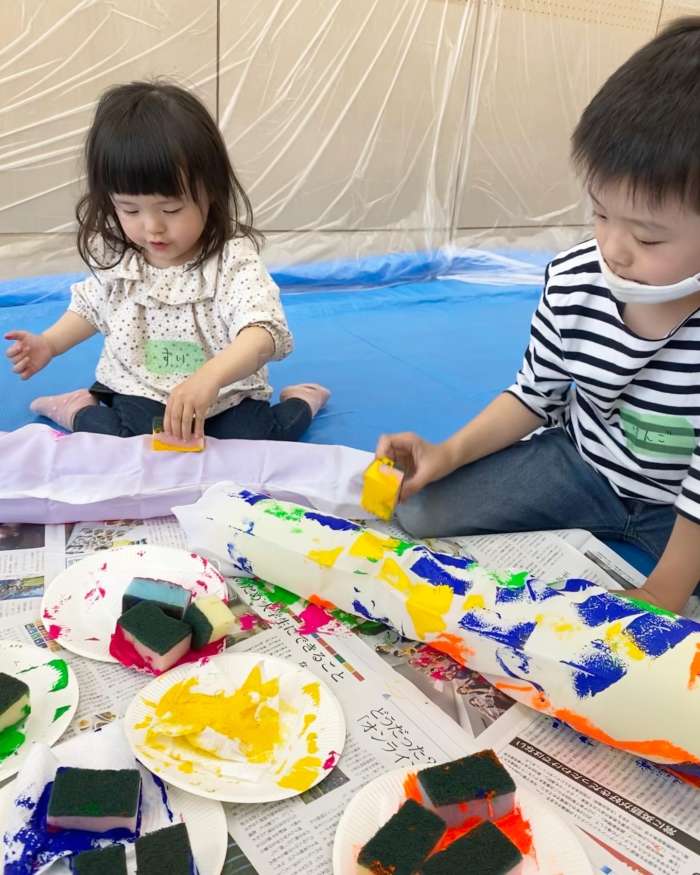
This year, Kengo and Sui took part in the workshop to make koinobori. Their koinobori was so colorful and we all loved it 😍!!!
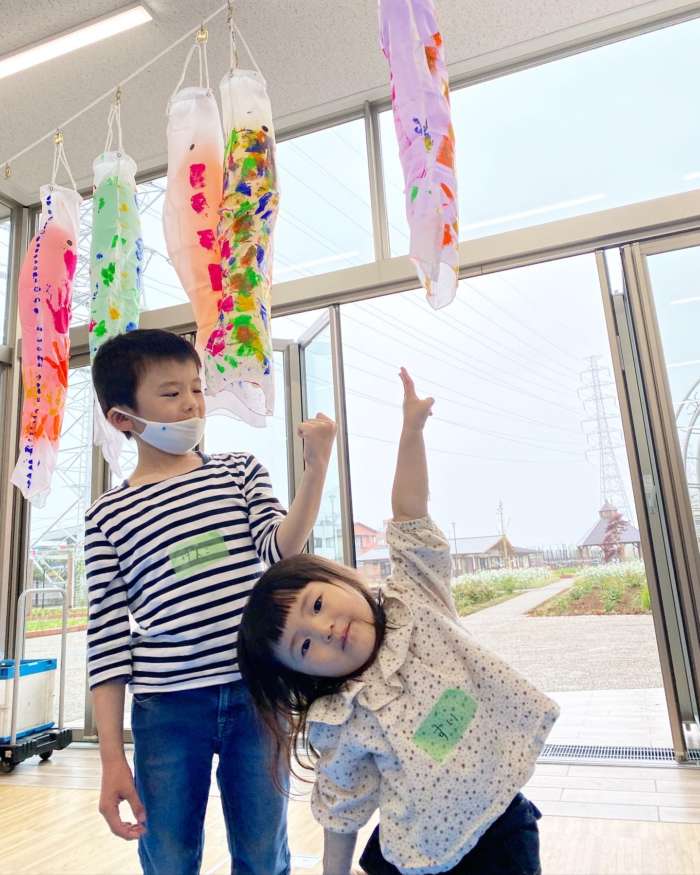
Memo:
Are you interested in more about Japanese culture & events? Check here!


































